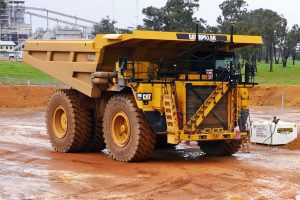A new US mine safety research paper has shone a light on key issues associated with education and risk avoidance. The paper entitled The role of risk avoidance and locus of control in workers’ near miss experiences: Implications for improving safety management systems published in the Journal of Loss Prevention in the Process Industries by Emily J.Haas and Patrick L.Yorio examined impacts of multiple factors including personality traits and education on risk avoidance
The authors state “The process industry has made major advancements and is a leader in near-miss safety management, with several validated models and databases to track close call reports.”
However, they claim that organizational efforts to develop safe work procedures and rules do not guarantee that employees will behaviorally comply with them. Assuming that at some point, every safety management system will need to be examined and realigned to help prevent incidents on the job, it is important to understand how personality traits can impact workers’ risk-based decisions.
Key Learnings in risk avoidance
- A one-unit increase in a miner’s risk avoidance is associated with a 34% decrease in near miss probability.
- Workers’ education level significantly influenced the likelihood of experiencing a near miss.
- Workers with an education level below high school were at greater risk of experiencing a near miss.
- The effect of risk avoidance on near misses was significant with the inclusion of locus of control and the interaction term between them.
- There was a significant, 14% decrease in the near miss probability for each unit increase in a miner’s locus of control.
- If one’s locus of control is higher, he or she is more likely to avoid risks and vice versa.
- Although locus of control is an internal factor, it can be influenced by organizational characteristics such as participation in decision making.
- It is important to improve organizational processes used to communicate with workers to advance their risk evaluation criteria.
Such work has been done in the mining industry due to its characteristically high risks and the results can be gleaned to help the process industry realign goals and values with their workforce. In the current study, researchers cross-sectionally surveyed 1,334 miners from 20 mine sites across the United States, varying in size and commodity.
The survey sought to understand how mineworkers’ risk avoidance could impact their near-miss incidents on the job – a common precursor to lost-time incidents.
RELATED CONTENT
- Critical Risk Management | The why and how
- ISO 45001 Occupational health & safety management systems
- Executives lack of risk governance putting businesses in jeopardy
Multiple regressions showed that as a miner’s level of risk avoidance increased by 1 unit in the 6-point response scale, the probability of experiencing a near miss significantly decreased by 30% when adjusting for relevant control variables. Additionally, a significant interaction between risk avoidance and locus of control suggested that the effect of risk avoidance on near misses is enhanced as a miner’s locus of control increases.
A one-unit increase in the locus of control appends the base effect of risk avoidance on near misses with an additional 8% decrease in the probability.
The findings are discussed from a near-miss safety management system perspective in terms of methods to foster both risk avoidance and locus of control in an effort to reduce the probability of near misses and lost time at the organizational level within the process industry and other high-hazard industries.
READ THE PAPER HERE














Add Comment